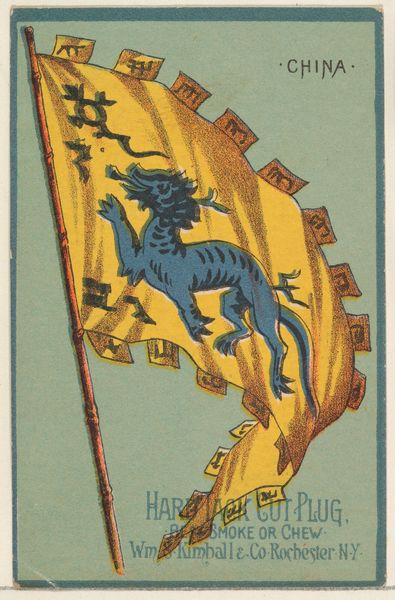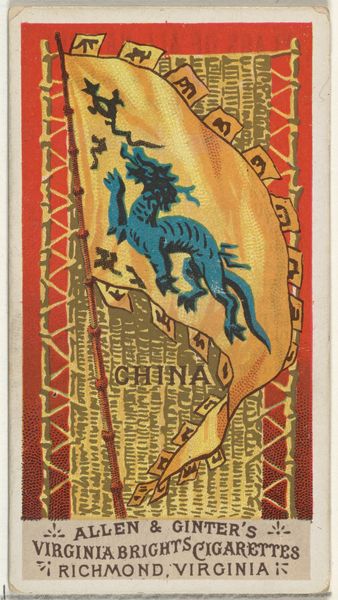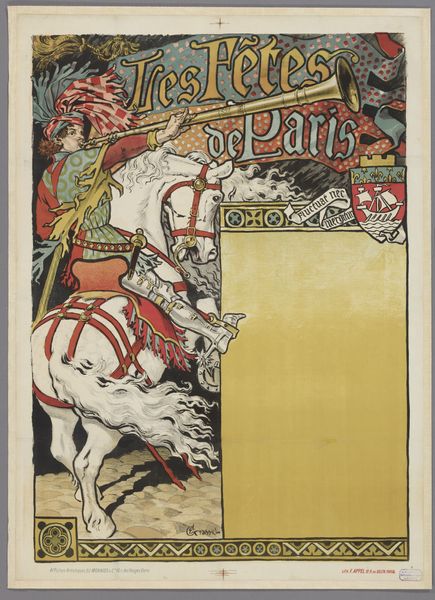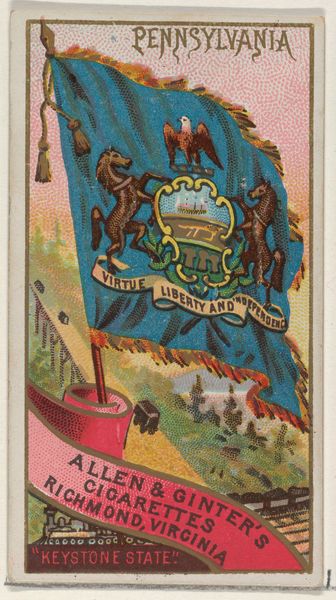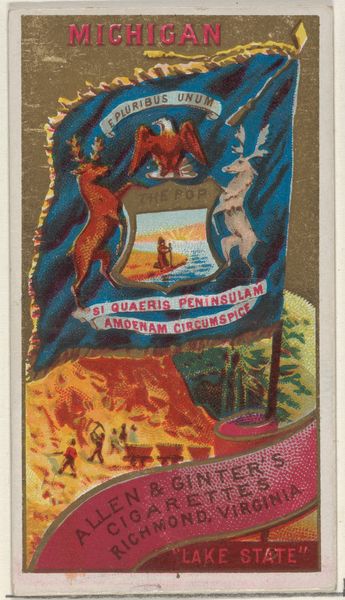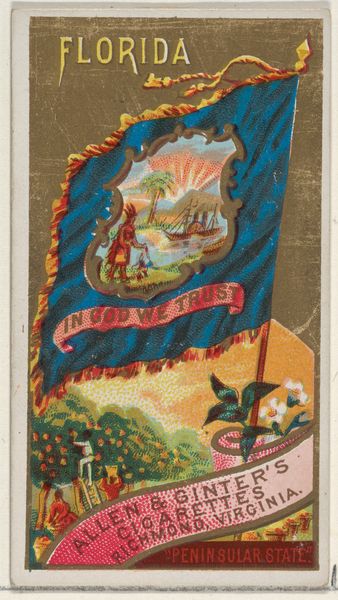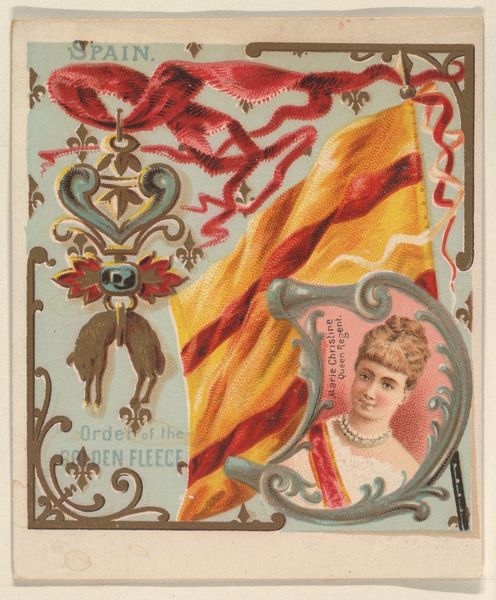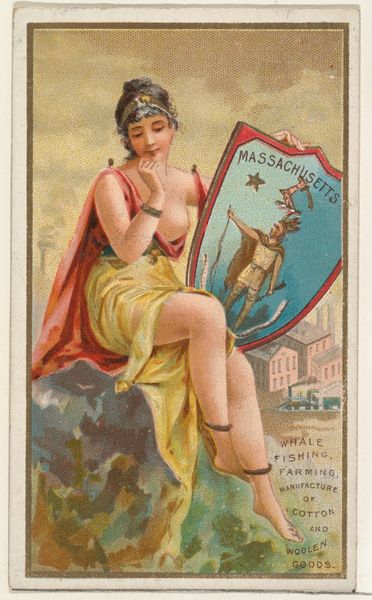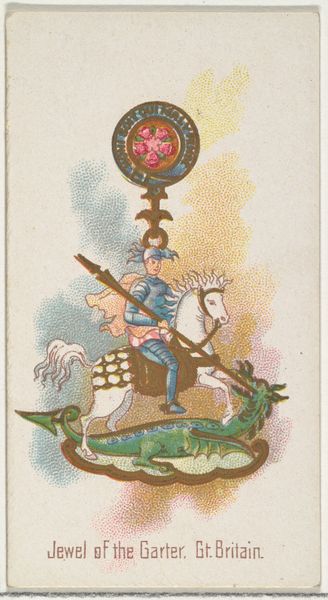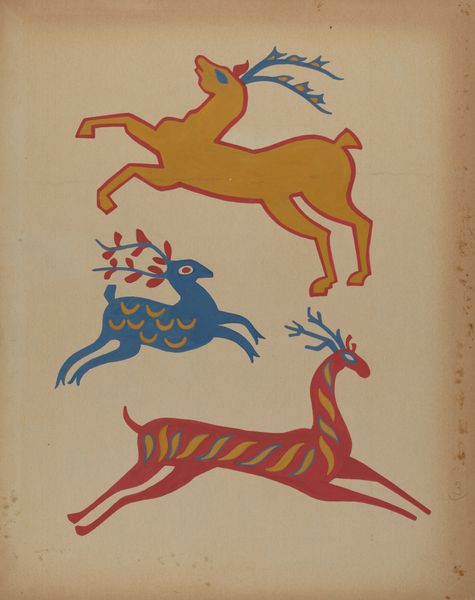
China, from the National Flags series (N195) issued by Wm. S. Kimball & Co. 1891
0:00
0:00
drawing, graphic-art, print
#
drawing
#
graphic-art
# print
#
asian-art
Dimensions: Sheet: 4 1/4 × 2 9/16 in. (10.8 × 6.5 cm)
Copyright: Public Domain
Curator: The first thing I see is the creature, part dragon, part lion, emblazoned on the flag. There's a power, a strength inherent in its gaze. Editor: And to consider this imagery's weight during its time. What we're viewing is a color lithograph trading card from 1891, "China, from the National Flags series," produced by the Wm. S. Kimball & Company. At a time when China and Chinese people were being heavily racialized. Curator: It is quite small, but this kind of art was made to be circulated and shared. Flags hold an especially interesting position as an object in that regard. Note the traditional symbols—perhaps some form of the Chinese dragon—paired with, well, an advertisement for tobacco. Editor: The cultural context is complex and difficult to read! This isn’t simply an homage to China. Tobacco cards often appropriated imagery to promote a sense of exoticism and consumerism. And that "Mechanics Long Cut" phrase makes the image very gendered, as it would have appealed to male labourers. Curator: Certainly, a striking convergence of disparate symbols: a commodified interpretation of Chinese identity placed upon the national flag, alongside advertising, all flattened within a small print. But what do you make of that dragon-like figure? Does its presentation seem…respectful? Condescending? I’m unsure. Editor: The rendering, simplified and flattened as it is, leans toward appropriation, or, arguably even an aesthetic mockery, of traditional Chinese iconography. It contributes to a broader historical narrative of orientalism and the exploitation of cultural symbols for economic gain. This would have perpetuated harmful stereotypes of Asian identity, reflecting exclusionary practices still ongoing. Curator: Perhaps this print reminds us of the subtle ways cultures and histories intertwine, sometimes harmoniously, sometimes antagonistically. Editor: Exactly! To reckon with art such as this allows us to interrogate power dynamics that shape collective cultural memory. Hopefully that will prevent repetition and erase oppressive symbolism from cultural and historical texts.
Comments
No comments
Be the first to comment and join the conversation on the ultimate creative platform.
